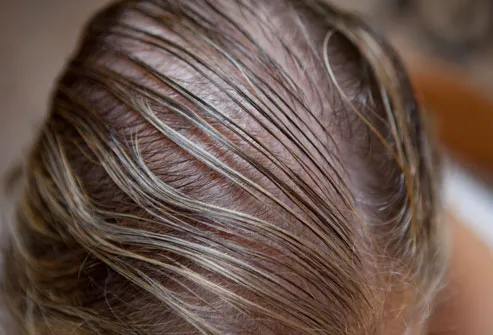Do you need a Dermatology appointment?
Types of Hair Loss
Causes of hair loss include:
- Family history (heredity). The most common cause of hair loss is a hereditary condition called male-pattern baldness or female-pattern baldness
- Hormonal changes and medical conditions, such as alopecia
- Medications and supplements
- Radiation therapy to the head
- A very stressful event
- Certain hairstyles and treatments
Many things can cause hair loss. To provide you with the right treatment, it’s essential to know what’s causing your hair loss.
Dermatologists have expertise in diagnosing hair loss and counseling their patients on what may help them regrow their hair.
THINNING HAIR AND HAIR LOSS: COULD IT BE FEMALE OR MALE PATTERN HAIR LOSS?

You may have male or female pattern hair loss (MPHL or FPHL), a condition that affects millions of men and women. FPHL is actually the most-common cause of hair loss in women.
For most women, FPHL begins in midlife, when a woman is in her 40s, 50s, or 60s. It can begin earlier for some women.
Both are a progressive condition. This means both men and women tend to continue losing hair. But most women do not lose all of their hair, as some men do. Instead, a woman’s part often gets wider. Hair near your temples may also recede.
Without treatment, some women and even men eventually develop widespread thinning. Treatment can prevent hair loss from worsening and help women regrow their hair. When started at the first sign of hair loss, treatment generally delivers the best results.
HOW CAN I TELL IF I HAVE FEMALE/MALE PATTERN HAIR LOSS?
It’s best to make an appointment to see a dermatologist. Dermatologists are the experts in diagnosing and treating hair loss. A dermatologist can tell you whether it’s FPHL/MPHL or something else that is causing your hair loss. Other causes of hair loss can look like FPHL/MPHL, so it’s important to rule out these causes.
WHAT CAUSES HAIR LOSS?

HOW DO DERMATOLOGISTS TREAT THESE TYPES OF HAIR LOSS?
To give optimal results, dermatologists may use more than one hair-loss treatment. Treatment options can include the following.
Minoxidil (meh-nox-eh-dil): Long used to treat male pattern hair loss, the US Food and Drug Administration (FDA) has approved this non-prescription treatment for women. Today, it is the most-recommended treatment. Products containing either 2% or 5% minoxidil have been approved to treat this type of hair loss.
What should I know about using minoxidil? For the first two to eight weeks, you may notice a temporary increase in hair loss. This stops when your hair begins to regrow.
A common side effect of minoxidil is an irritated scalp, which may cause dryness, scaling, itching, and/or redness on your scalp. If this happens, it’s best to stop using minoxidil and see your dermatologist.
Another possible side effect is to see hair growing in places other than your scalp, such as on your cheeks and forehead. If this happens, you can limit it by:
- Trying to apply minoxidil only to your scalp and avoiding other areas
- Washing your face after you apply minoxidil to your scalp
When will I see results? Hair grows slowly, so it takes time to see results. You’ll need to use minoxidil continuously for about one year before you know how well it will work for you. If this medication works for you, you’ll need to use it every day to continue getting results. When you stop, the hairs that grew because of minoxidil will fall out within three to four months, and your hair loss can continue.
Minoxidil, pregnancy, and breastfeeding: Women who are pregnant or plan to become pregnant should avoid minoxidil. Studies of pregnant animals have shown minoxidil can be harmful to a developing fetus.
Women who are breastfeeding should also avoid minoxidil. Traces of minoxidil may pass into breast milk, which can be harmful to a nursing infant.
How is minoxidil used? You apply it to your dry scalp. Some products you should apply once a day. Others you apply twice a day.
MINOXIDIL, PREGNANCY, AND BREASTFEEDING
Prescription medications: Some prescription medications have proven effective in helping women with FPHL grow hair and prevent 
To date, these medications have received FDA approval to treat other conditions, but not FPHL. Doctors often prescribe FDA-approved medications to treat medical conditions other than those for which the drug was approved.
A dermatologist may prescribe one of the following medications to treat FPHL. Each of these medications is a pill.
Spironolactone (speh-ren-no-LAK-tone): This medication is a diuretic, which has been prescribed for decades to treat hair loss. It is a common treatment for FPHL because it can help restore hair growth and prevent hair loss from worsening.
Before taking spironolactone, be sure to tell your dermatologist about your medical conditions, including kidney and adrenal gland problems. Also, be sure that your dermatologist knows all the medications and supplements you take.
Your dermatologist may prescribe another medication to treat FPHL, such as finasteride (fi-NAS-ter-ide), flutamide(flu-TA-mide), or dutasteride (doo-TAS-ter-ide).
With any medication, side effects are possible. Ask your dermatologist about possible side effects that you might experience while taking one of these medications.
When will I see results? If your dermatologist prescribes one of these medications, you’ll need to take it for 6 to 12 months before you’ll know if it works for you. No hair growth within 12 months means the medication won’t work for you.
Like minoxidil, once you stop taking a prescription medication, you lose the hair that grew. This happens in about three to four months.
Pregnancy and hair-loss medications: All of these prescription medications may cause birth defects, so none of these is an option 
Hair transplant: Long used to treat hair loss in men, a hair transplant may be an option for some women with FPHL.
The hair transplant has come a long way since the days of hair plugs. Today, most hair transplants look completely natural.
Not everyone is a good candidate for a hair transplant though. If the hair on your scalp is sparse all over, you may not have enough healthy hair to transplant. A hair transplant surgeon, many of whom are dermatologists, can tell you if a hair transplant may help restore your hair.
ARE THERE OTHER TREATMENT OPTIONS?
Researchers continue to look for new ways to stimulate hair growth and stop hair breakage. Other treatments include the following.
Lasers for at-home use: The FDA has approved laser combs, helmets, and other devices, which are available without a prescription, to treat hair loss at home. These devices emit a low level of laser light that may help stimulate new hair growth. A few studies show that this can be effective for treating FPHL.
As with minoxidil and prescription medicines, you must continue using an at-home laser device to see results. We still do not know whether these devices are safe for long-term use or if they can continue to produce new hair growth.
Supplements: Many supplements, including biotin and folic acid, are said to help grow and thicken hair. In studying these different supplements, the findings have been mixed. In most studies, the supplements had no effect on hair growth and thickness. Nutrafol, carried in our store, has had fantastic results in clinical studies and for several staff members.

Hair loss shampoos: These shampoos tend to do one of the following.
- Help your hair hold moisture, which makes hair look fuller and thicker
- Lessen breakage, which can reduce thinning
While hair loss shampoos may do the above, they cannot regrow hair or prevent hair loss from worsening.
A DERMATOLOGIST’S DIAGNOSIS IS BEST WHEN STARTING HAIR LOSS TREATMENT
If you think you have FPHL/MPHL, it’s important to see a dermatologist for a diagnosis. People develop hair loss for many reasons. Other common causes of hair loss can look a lot like FPHL. Each of these causes requires different treatment. Without the right treatment, hair loss often continues.
